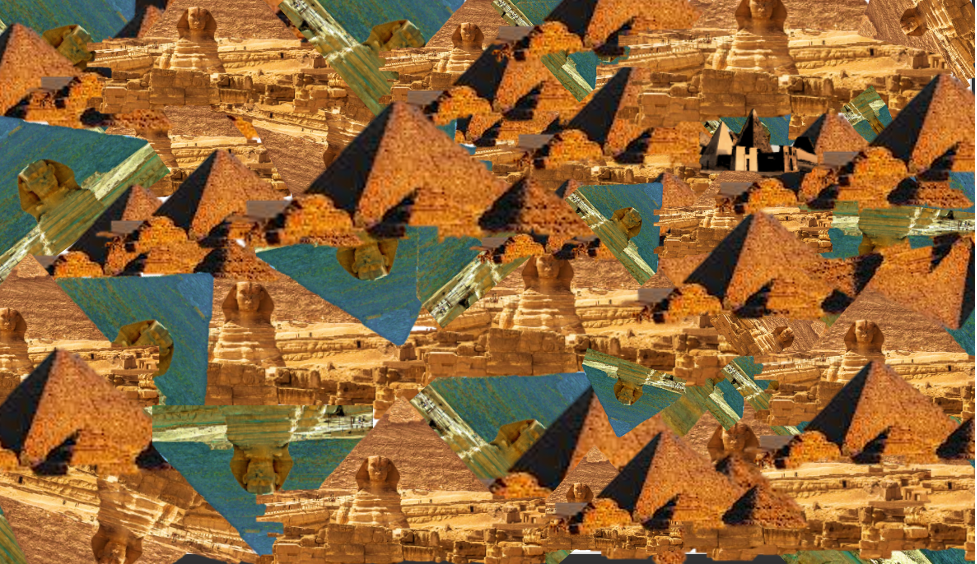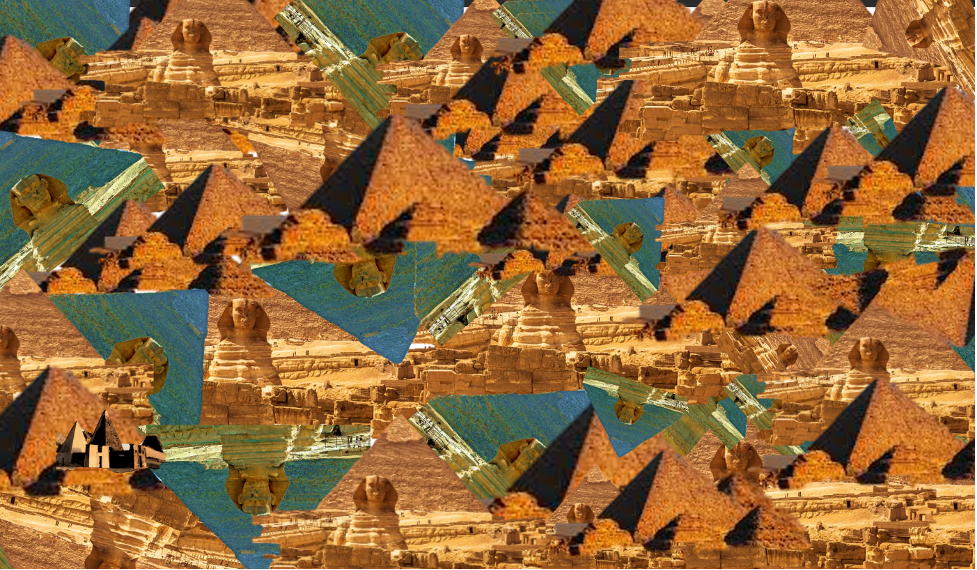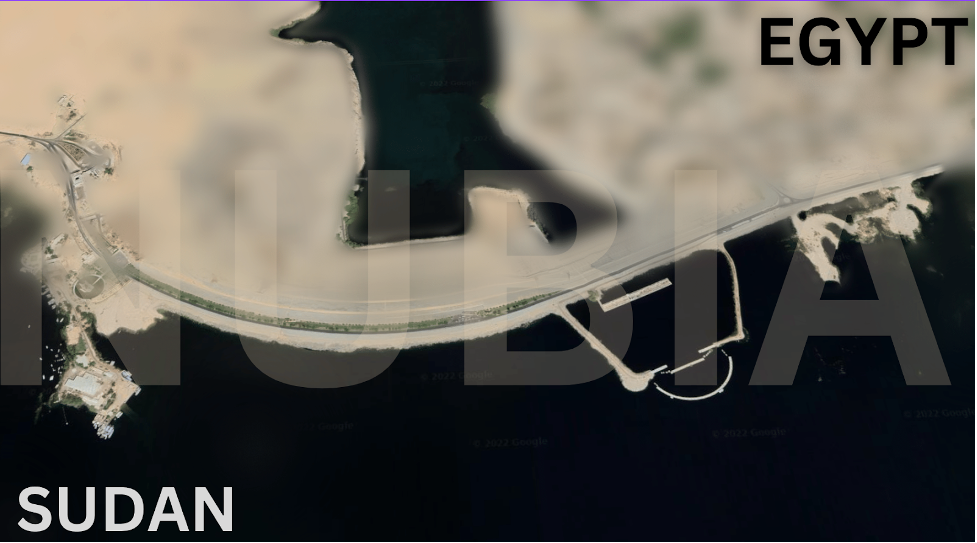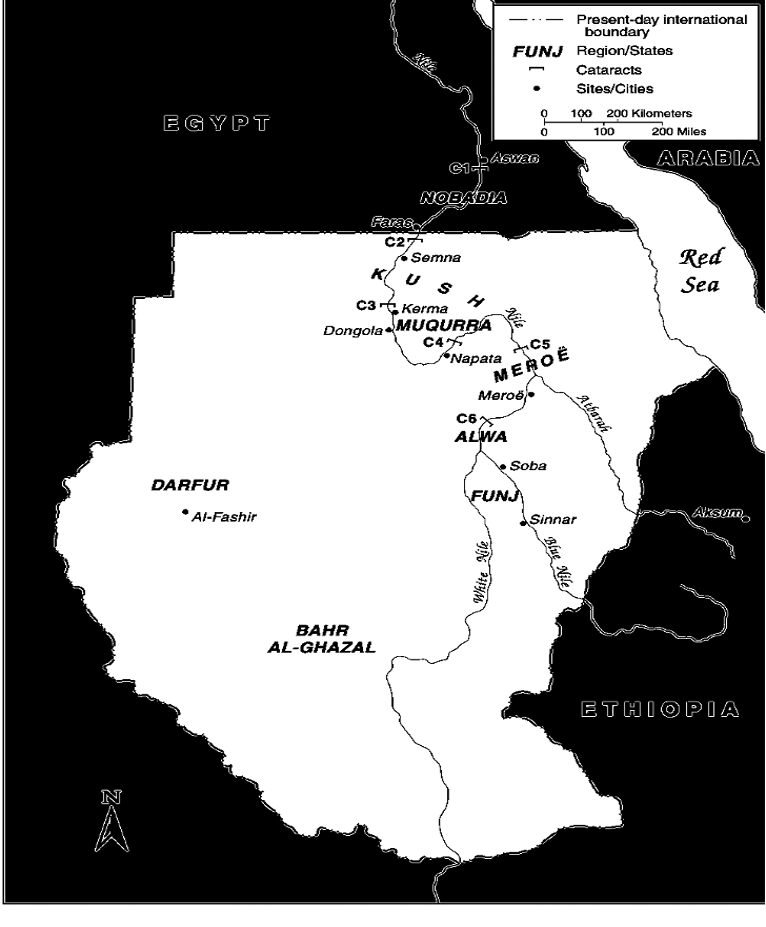Postcard 1: Where’s Nubia?
Find the Hidden Nubian Pyramid in This Collage



The Nubian pyramids, with over 200 structures located in the region of ancient Nubia, represent a significant and often overlooked aspect of the cultural and historical heritage of Sudan. These pyramids, built as tombs for the kings and queens of the Kingdom of Kush, are known for their impressive size and well-preserved state, with the Pyramid of Meroe being particularly noteworthy in this regard. Despite the rich history and cultural significance of these pyramids, they have often been overshadowed by the more well-known Egyptian pyramids of Giza.
In an effort to draw attention to this discrepancy and to highlight the importance of Nubian culture, I have created a series of postcards inspired by the popular “Where’s Waldo” game. These postcards feature collages of images of both Egyptian and Nubian pyramids, with the goal being to locate the single Nubian pyramid hidden among the Egyptian structures. Each successive postcard becomes increasingly difficult, reflecting the ongoing struggle to bring recognition to Nubian culture in the face of overwhelming Egyptian influence. Through this creative project, I hope to raise awareness of the rich history and cultural significance of the Nubian pyramids and to encourage a deeper appreciation for the diversity and complexity of this ancient African civilization.
Sources:
Britannica, T. Editors of Encyclopaedia. “Pyramids of Giza.” Encyclopedia Britannica, August 23, 2022. https://www.britannica.com/topic/Pyramids-of-Giza.
Brodkin, Mark. Pyramid Caravan. 2019, Getty Images. https://photos.com/featured/pyramid-caravan-mark-brodkin-photography.html
Goldman, Mario. The Pyramid of Khafre (Chephren) and the Giza Sphinx at the Giza.Pyramids 2018. https://www.newsweek.com/ancient-egypt-giza-pyramids-cardinal-points-equinox-812045
Nina. R, Sudan, Nubian Pyramids. 2016. https://www.flickr.com/photos/150102727@N06/31444909381
Highlight below for answer key:
Easy: Upper Right
Intermediate: Lower Left
Hard: Upper Middle to the left a bit
Postcard 2: Displacement and Erasure

Google Earth Screenshot of the Aswan Dam with Countries Listed
The construction of the contemporary Aswan Dam in Egypt has had significant impacts on the indigenous Nubian population, resulting in the displacement of approximately 100,000 individuals. The Sudanese and Egyptian governments have been criticized for attempting to undermine Nubian culture as a separate entity and for using the dam as a tool to force Nubians to assimilate into mainstream Egyptian or Sudanese society. In response, I have created a postcard that visually represents the ongoing marginalization of Nubia by these two nation-states. The postcard features a blurred image of Nubian land, with the words “Egypt” and “Sudan” prominently displayed in the upper right and lower left corners, respectively. By contrast, the word “Nubia” is faint and overlaid on top of the Aswan Dam, symbolizing the way in which Egypt and Sudan are imposing their power and control over Nubian territory. Overall, my postcard aims to draw attention to the ongoing struggles of the Nubian people and the ways in which their culture and history are being erased by large, recognized nation-states.
Sources:
Google Earth. Aswan Dam 23.9709° N, 32.8773° E, 2022. https://earth.google.com/web/search/aswan+dam/@24.00234415,33.04401573,2929.44071492a,962423.49457381d,35y,0h,0t,0r/data=CiwSAggBIiYKJAnu7S7Ju8dLQBEKXlcDjhNIQBmmPfFKpnowQCEqa51LjaEGQA
Postcard 3: The Kingdom of Kush

Map of the Nubian Kingdom of Kush
In an effort to counter the erasure and disregard for Nubian culture that has been highlighted in my previous postcards, I have created a new postcard that focuses solely on the territories occupied by the Kingdom of Kush in ancient Nubia. By blacking out the rest of the world on this postcard, I aim to shift the focus to Nubia and its rich history and culture, and to encourage a greater appreciation for the contributions and significance of this civilization. Through this creative project, I hope to challenge the dominant narratives that have marginalized and ignored Nubian culture and to bring greater recognition to the importance of this civilization in the broader context of global history.
Sources:
Berry, LaVerle. Sudan-A Country Study. Library of Congress. 2015.
